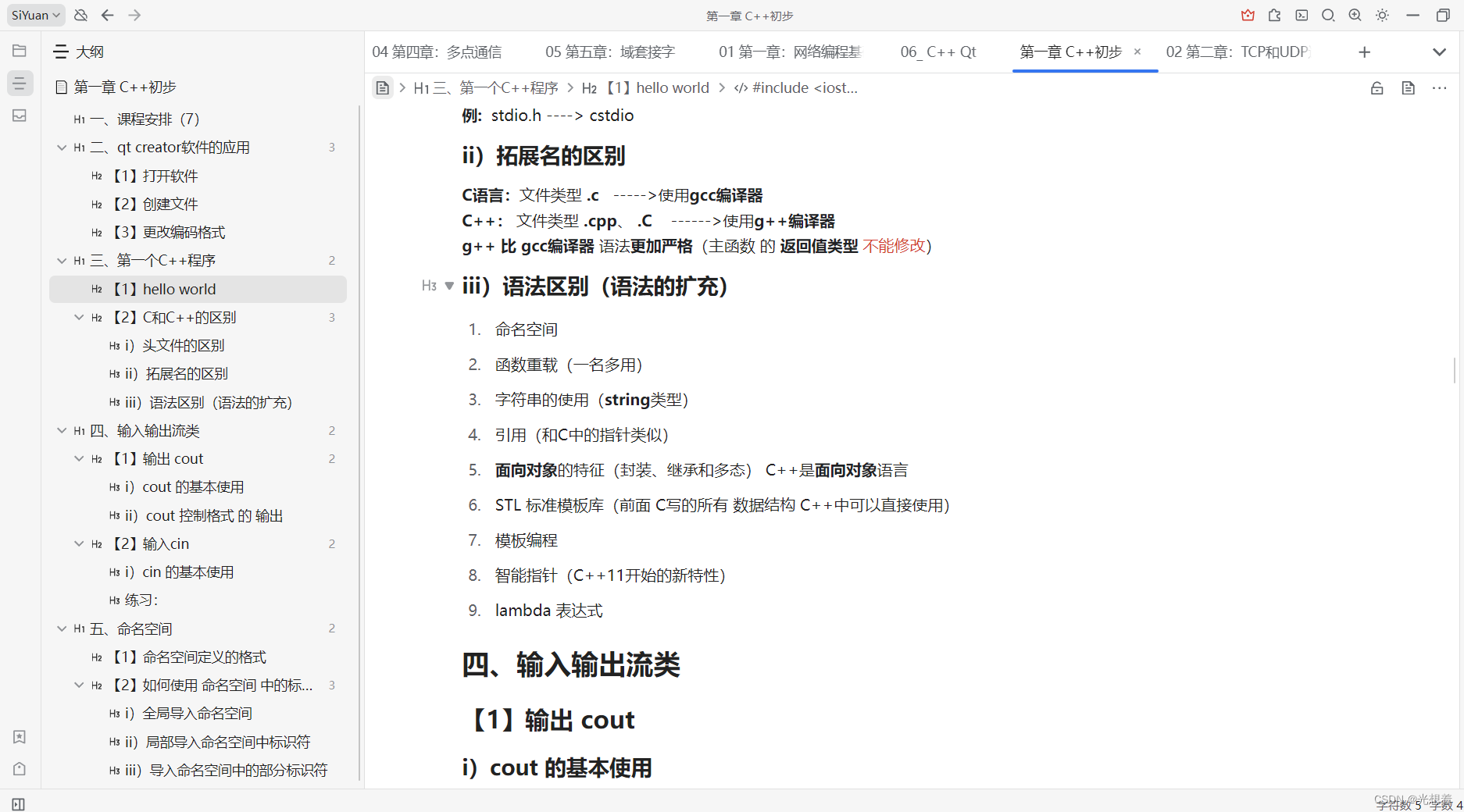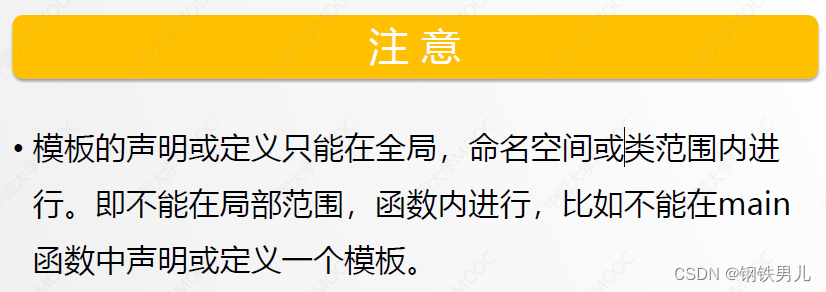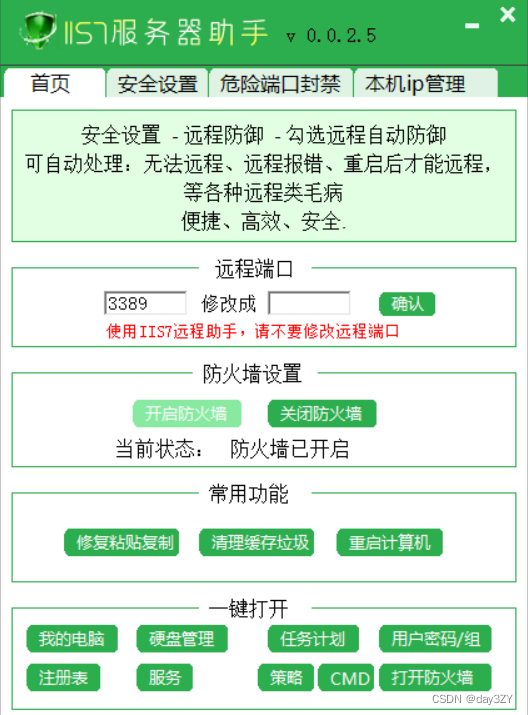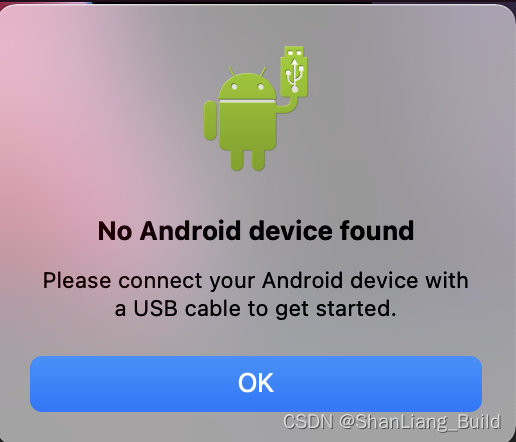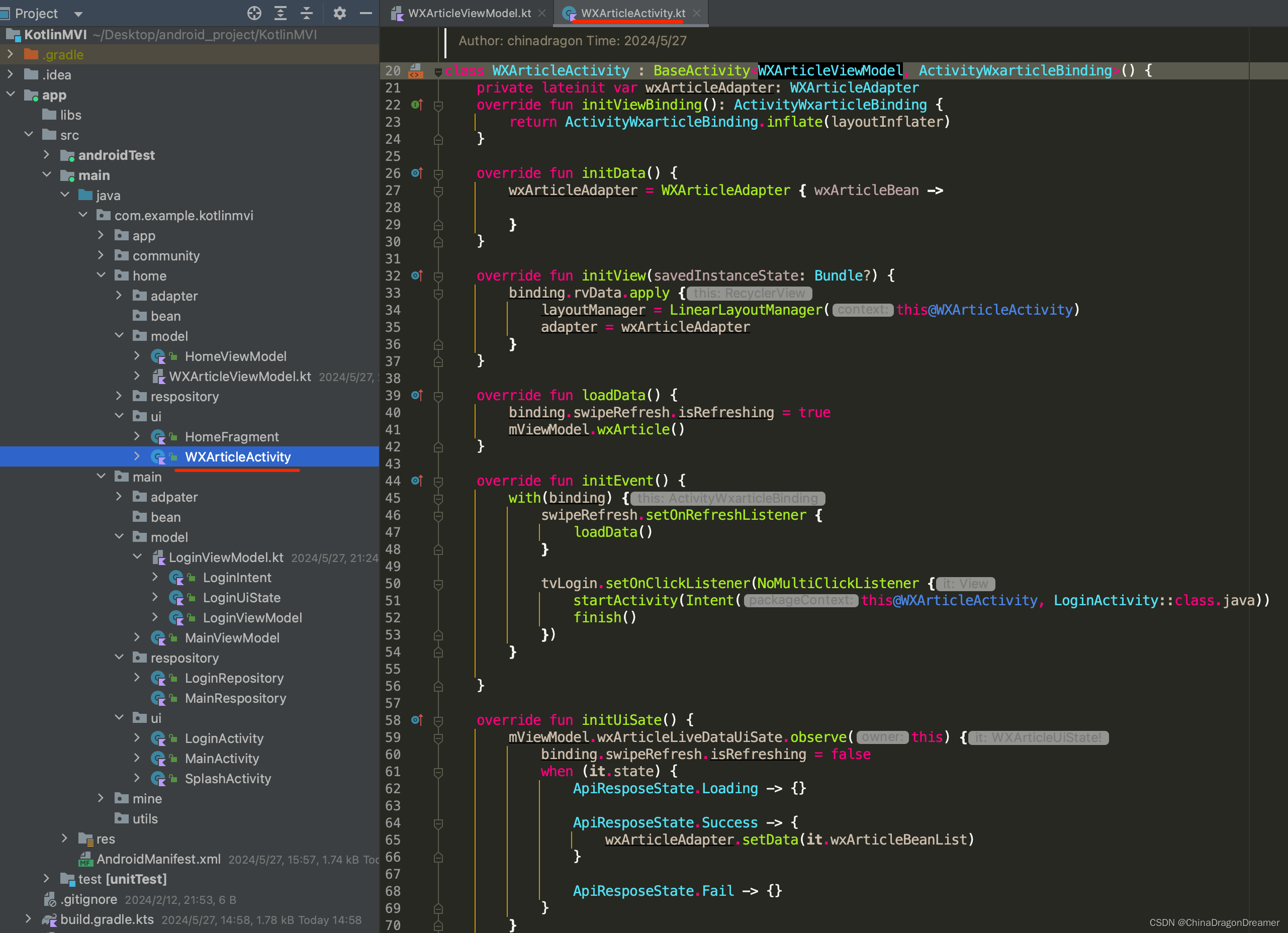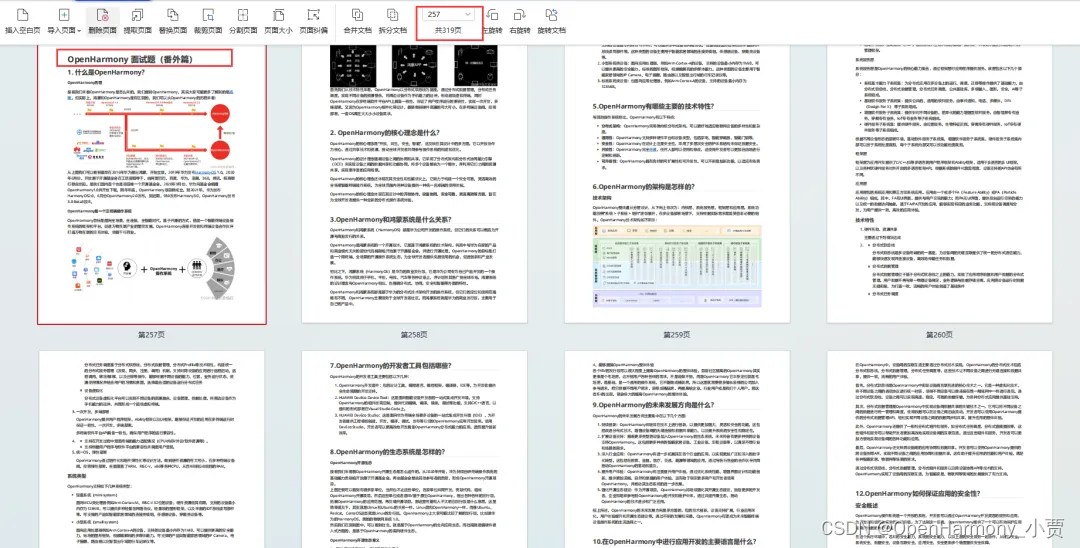1. AOP概述

2. AOP快速入门
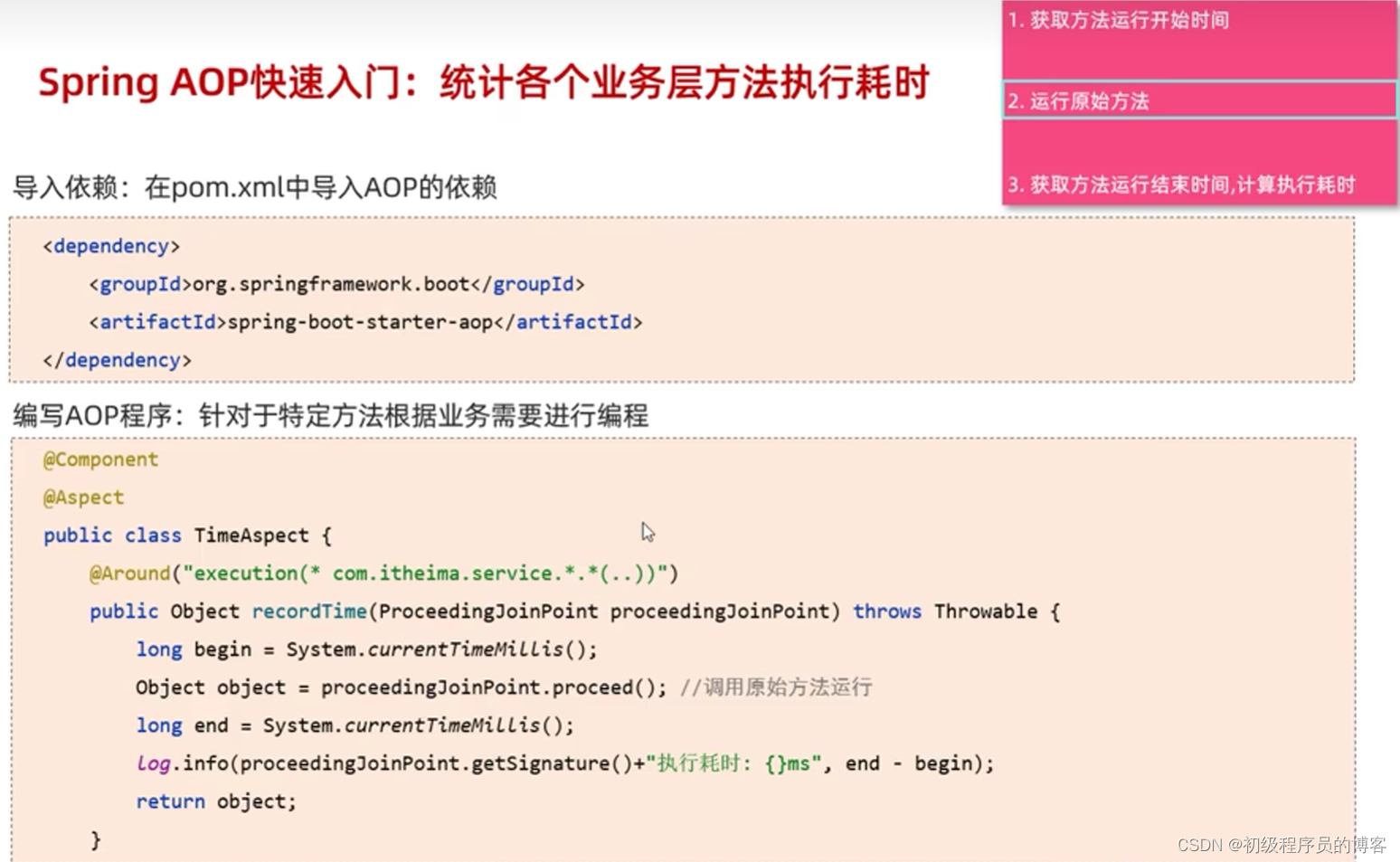
依赖:
<dependency>
<groupId>org.springframework.boot</groupId>
<artifactId>spring-boot-starter-aop</artifactId>
<version>${spring-boot.version}</version>
</dependency>示例:记录方法的执行耗时
创建一个aop类:(在执行com.etc.aoptest.service.impl.UserServiceImpl类下否方法时就会进行环绕通知)
package com.etc.aoptest.aop;
import lombok.extern.slf4j.Slf4j;
import org.aspectj.lang.ProceedingJoinPoint;
import org.aspectj.lang.annotation.Around;
import org.aspectj.lang.annotation.Aspect;
import org.springframework.stereotype.Component;
@Slf4j
@Component
@Aspect
public class TimeAspect {
@Around("execution(* com.etc.aoptest.service.impl.UserServiceImpl.*(..))")
public Object recordTime(ProceedingJoinPoint joinPoint) throws Throwable{
long begin = System.currentTimeMillis();
Object result = joinPoint.proceed();
long end = System.currentTimeMillis();
log.info(joinPoint.getSignature() + "方法执行耗时: {}ms",end - begin);
return result;
}
}
3. AOP的核心概念
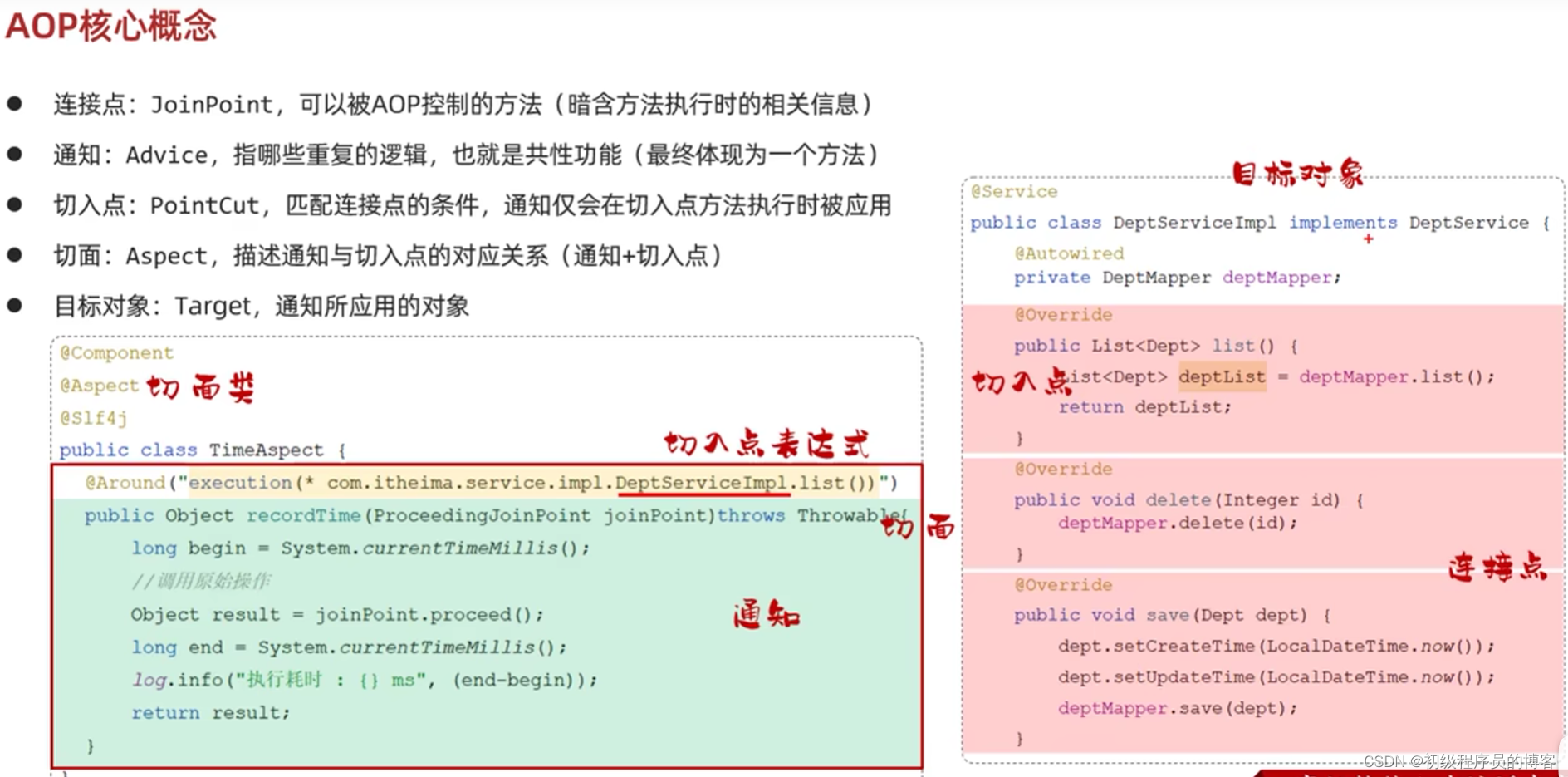
4. AOP通知类型
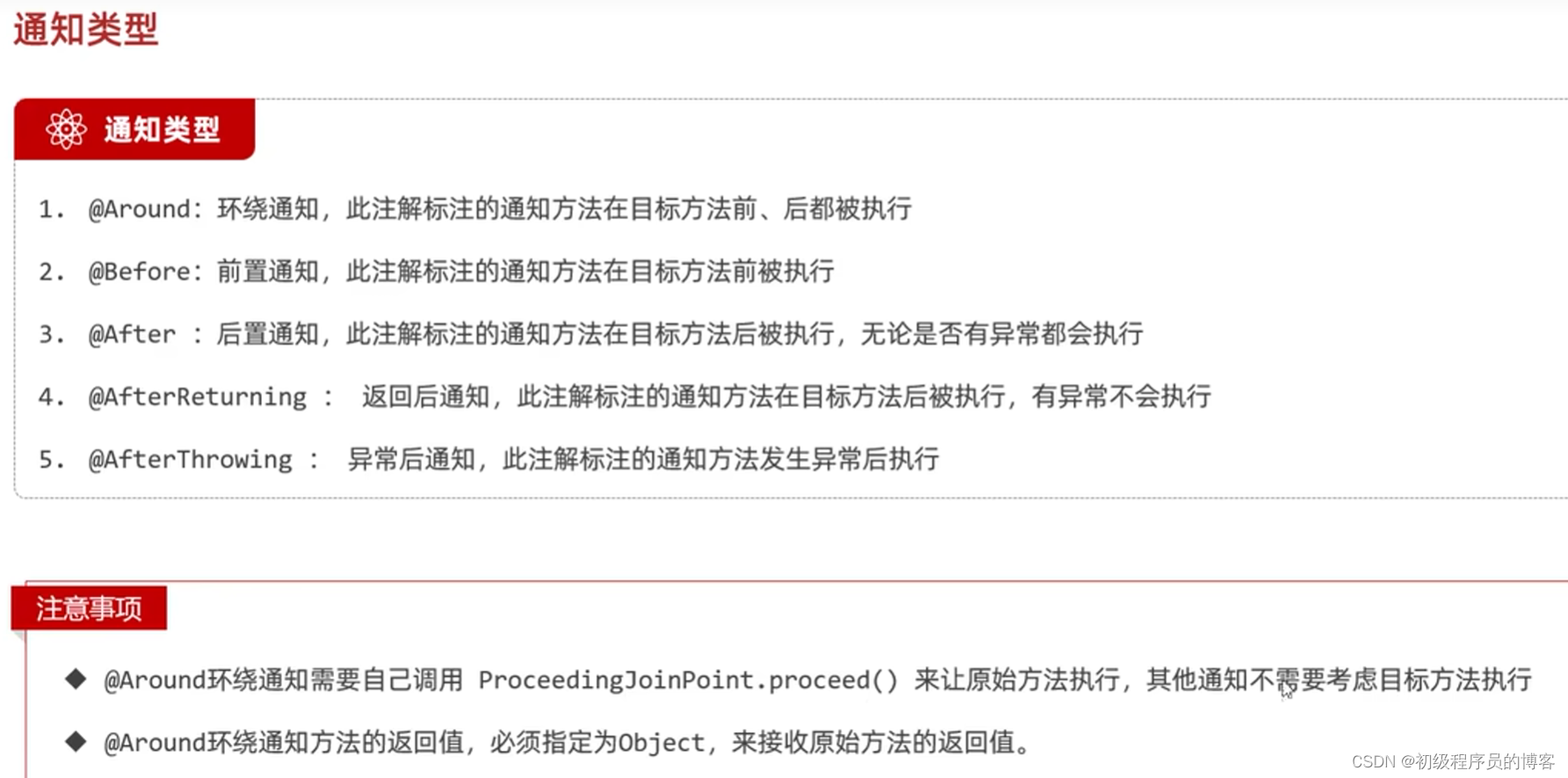
创建一个aop类用于测试AOP通知类型
package com.etc.aoptest.aop;
import lombok.extern.slf4j.Slf4j;
import org.aspectj.lang.ProceedingJoinPoint;
import org.aspectj.lang.annotation.*;
import org.springframework.stereotype.Component;
@Slf4j
@Component
@Aspect
public class AspectType {
//环绕通知,目标方法前后都被执行
@Around("execution(* com.etc.aoptest.service.impl.UserServiceImpl.*(..)) ")
public void around(ProceedingJoinPoint joinPoint) throws Throwable {
log.info("方法执行前..................................");
Object result = joinPoint.proceed();
log.info("方法执行后..................................");
}
//环绕前通知
@Before("execution(* com.etc.aoptest.service.impl.UserServiceImpl.*(..)) ")
public void before() {
log.info("before通知..................................");
}
//环绕后通知
@After("execution(* com.etc.aoptest.service.impl.UserServiceImpl.*(..)) ")
public void after() {
log.info("after通知..................................");
}
//返回后通知
@AfterReturning("execution(* com.etc.aoptest.service.impl.UserServiceImpl.*(..)) ")
public void afterReturning() {
log.info("afterReturning通知..................................");
}
//异常后通知
@AfterThrowing("execution(* com.etc.aoptest.service.impl.UserServiceImpl.*(..)) ")
public void afterThrowing(){
log.info("afterThrowing通知..................................");
}
}
可以通过@Pointcut简化冗余切面点表达式
修改后如下所示:
package com.etc.aoptest.aop;
import lombok.extern.slf4j.Slf4j;
import org.aspectj.lang.ProceedingJoinPoint;
import org.aspectj.lang.annotation.*;
import org.springframework.stereotype.Component;
@Slf4j
@Component
@Aspect
public class AspectType {
@Pointcut("execution(* com.etc.aoptest.service.impl.UserServiceImpl.*(..)) ")
private void pt(){};
//环绕通知,目标方法前后都被执行
//@Around("execution(* com.etc.aoptest.service.impl.UserServiceImpl.*(..)) ")
@Around("pt()")
public void around(ProceedingJoinPoint joinPoint) throws Throwable {
log.info("方法执行前..................................");
Object result = joinPoint.proceed();
log.info("方法执行后..................................");
}
//环绕前通知
//@Before("execution(* com.etc.aoptest.service.impl.UserServiceImpl.*(..)) ")
@Before("pt()")
public void before() {
log.info("before通知..................................");
}
//环绕后通知
//@After("execution(* com.etc.aoptest.service.impl.UserServiceImpl.*(..)) ")
@After("pt()")
public void after() {
log.info("after通知..................................");
}
//返回后通知
//@AfterReturning("execution(* com.etc.aoptest.service.impl.UserServiceImpl.*(..)) ")
@AfterReturning("pt()")
public void afterReturning() {
log.info("afterReturning通知..................................");
}
//异常后通知
//@AfterThrowing("execution(* com.etc.aoptest.service.impl.UserServiceImpl.*(..)) ")
@AfterThrowing("pt()")
public void afterThrowing(){
log.info("afterThrowing通知..................................");
}
}
其他aop类也可以引入当前aop类的切面点表达式
不过需要将private void pt()修改为public void pt();
示例:
package com.etc.aoptest.aop;
import lombok.extern.slf4j.Slf4j;
import org.aspectj.lang.ProceedingJoinPoint;
import org.aspectj.lang.annotation.Around;
import org.aspectj.lang.annotation.Aspect;
import org.springframework.stereotype.Component;
@Slf4j
@Component
@Aspect
public class TimeAspect {
//@Around("execution(* com.etc.aoptest.service.impl.UserServiceImpl.*(..))")
@Around("com.etc.aoptest.aop.AspectType.pt()")
public Object recordTime(ProceedingJoinPoint joinPoint) throws Throwable{
long begin = System.currentTimeMillis();
Object result = joinPoint.proceed();
long end = System.currentTimeMillis();
log.info(joinPoint.getSignature() + "方法执行耗时: {}ms",end - begin);
return result;
}
}
5. AOP执行顺序
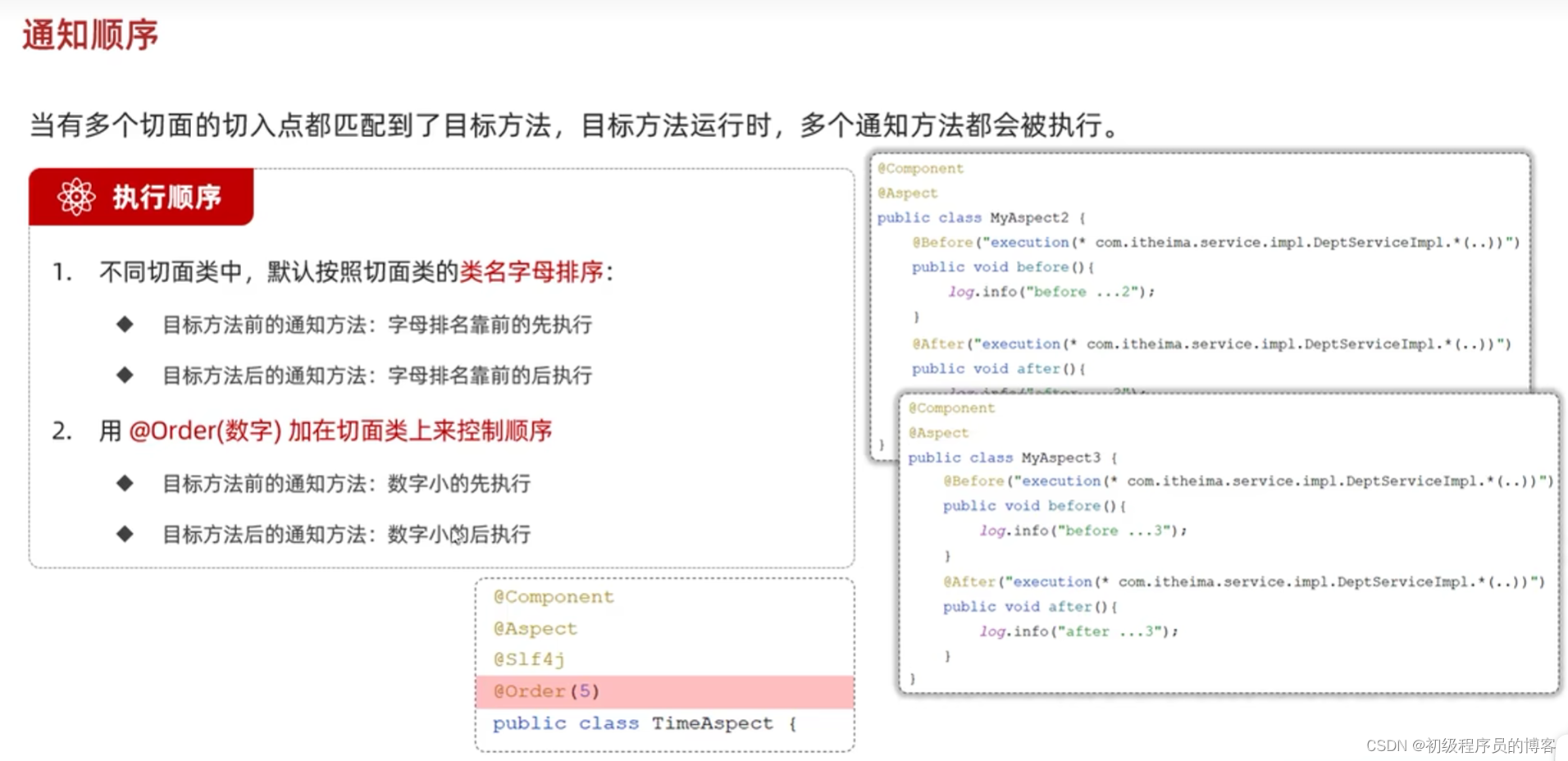
6. AOP切入点表达式
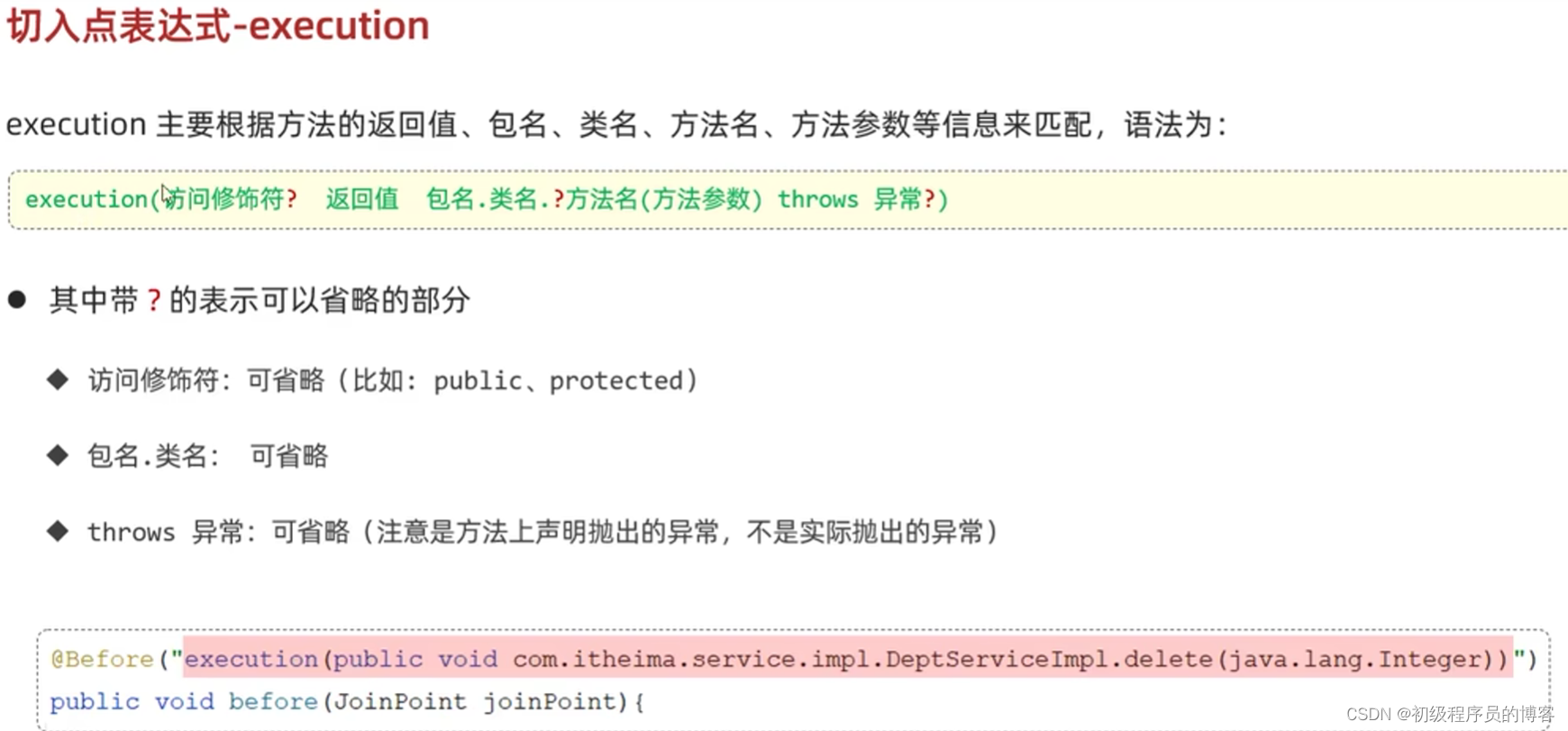
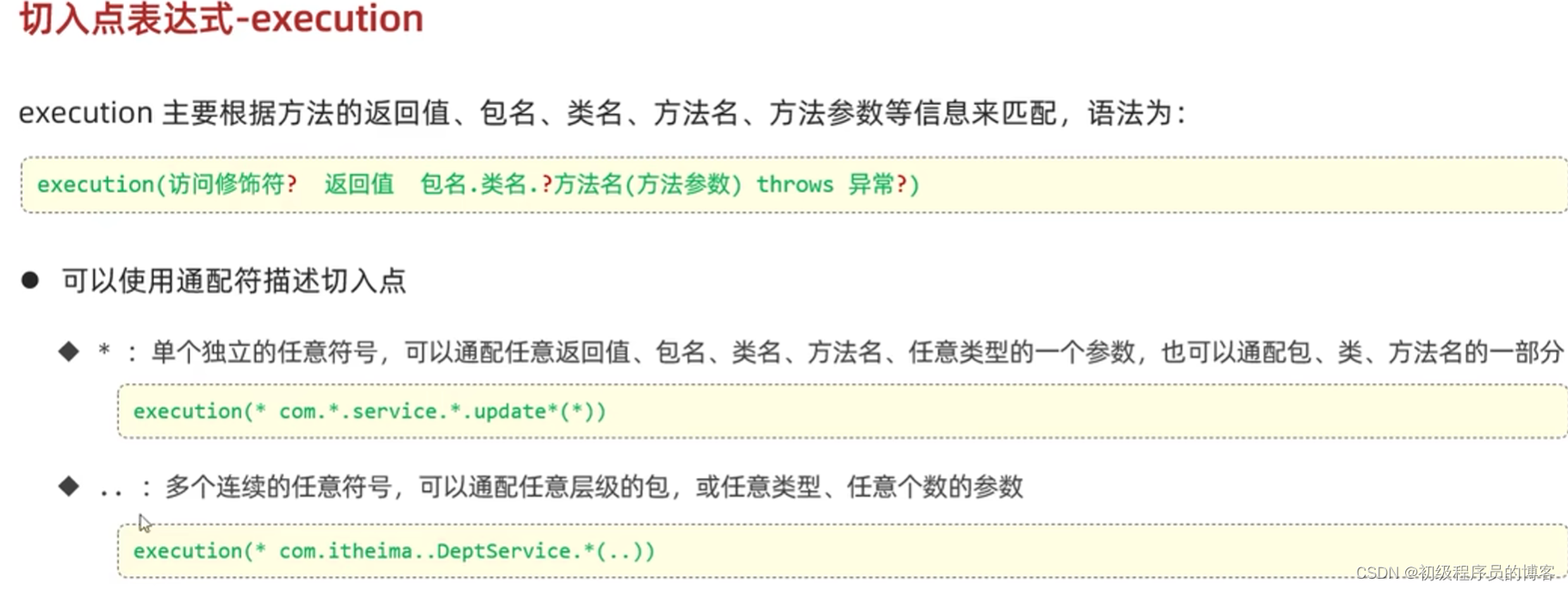
7. AOP多个切入点表达式 @Annotation
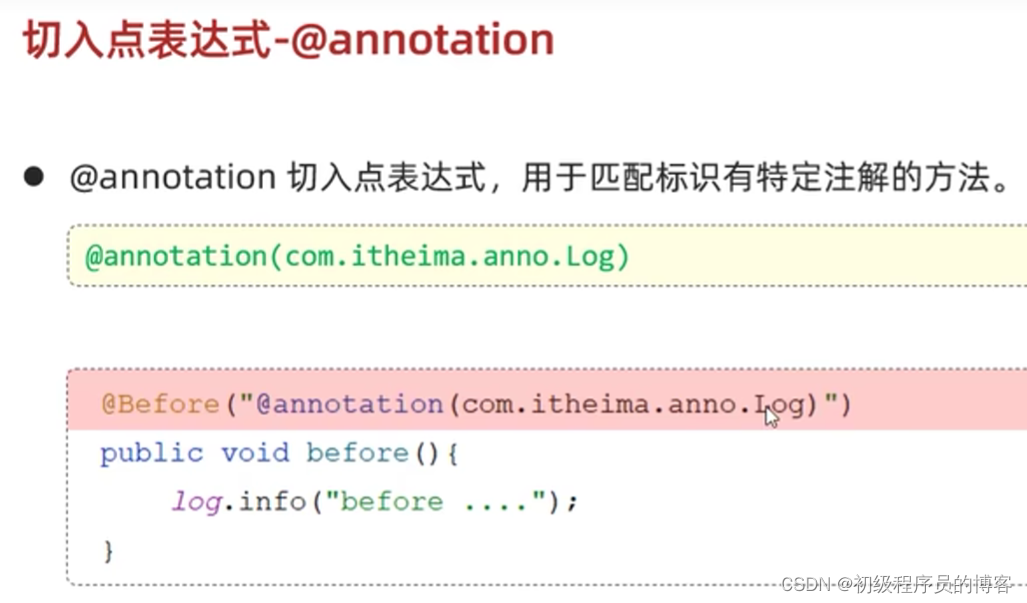
这样就无需写表达式,只需要写在对应的方法上加上自定义的注解,这时Annotation就会通过对应的注解切入点表达式。
示例:
步骤一
首先在一个log包内创建UserLog自定义注解
UserLog:
package com.etc.aoptest.log;
import java.lang.annotation.ElementType;
import java.lang.annotation.Retention;
import java.lang.annotation.RetentionPolicy;
import java.lang.annotation.Target;
@Retention(RetentionPolicy.RUNTIME) //运行时生效
@Target(ElementType.METHOD) //标识方法
public @interface UserLog {
}
步骤二
aop包下创建AnnoAspect 用于AOP注入时实现的环绕通知
package com.etc.aoptest.aop;
import lombok.extern.slf4j.Slf4j;
import org.aspectj.lang.ProceedingJoinPoint;
import org.aspectj.lang.annotation.Around;
import org.aspectj.lang.annotation.Aspect;
import org.aspectj.lang.annotation.Pointcut;
import org.springframework.core.annotation.Order;
import org.springframework.stereotype.Component;
@Slf4j
@Component
@Aspect
public class AnnoAspect {
@Pointcut("@annotation(com.etc.aoptest.log.UserLog)")
private void pt(){}
@Around("pt()")
public Object around(ProceedingJoinPoint joinPoint) throws Throwable {
log.info("UserLog-方法执行前..................................");
Object result = joinPoint.proceed();
log.info("UserLog-方法执行后..................................");
return result;
}
}
步骤三
在所注入AOP的方法上加上自定义注解名@UserLog
package com.etc.aoptest.controller;
import com.etc.aoptest.log.UserLog;
import com.etc.aoptest.pojo.User;
import com.etc.aoptest.service.IUserService;
import lombok.RequiredArgsConstructor;
import org.springframework.web.bind.annotation.PathVariable;
import org.springframework.web.bind.annotation.RequestMapping;
import org.springframework.web.bind.annotation.RestController;
import java.util.List;
@RestController
@RequestMapping("/user")
@RequiredArgsConstructor
public class UserController {
private final IUserService userService;
@UserLog
@RequestMapping("/getList")
public List<User> getList(){
return userService.getList();
}
@UserLog
@RequestMapping("/{id}")
public User getById(@PathVariable Long id){
return userService.getById(id);
}
}
8. AOP连接点
通过JoinPoint来获取方法执行时的相关信息,只有环绕通知使用ProceedingJoinPoint来获取相关信息而另外四种AOP通知类型则通过JoinPoint来获取相关信息。
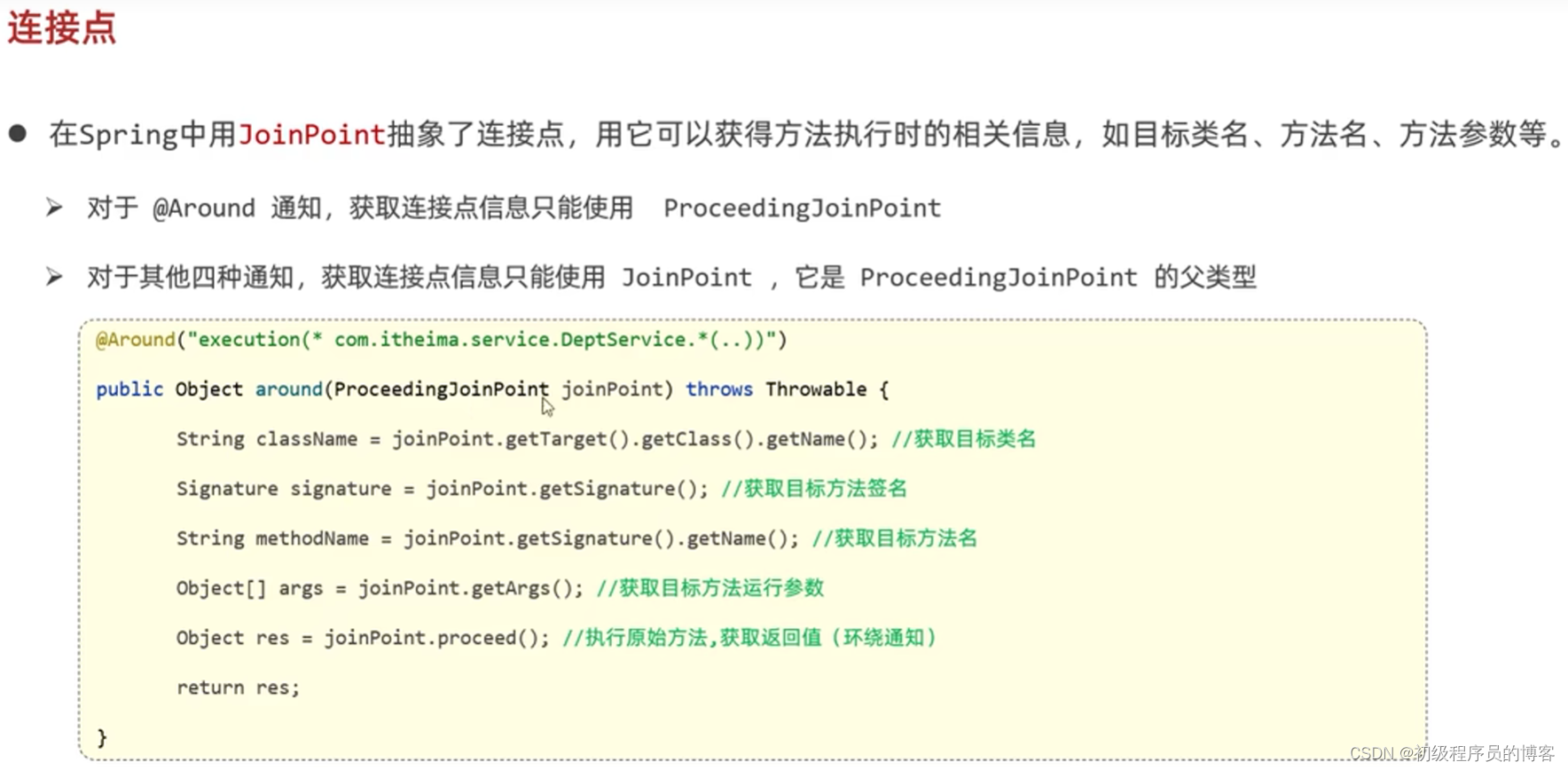
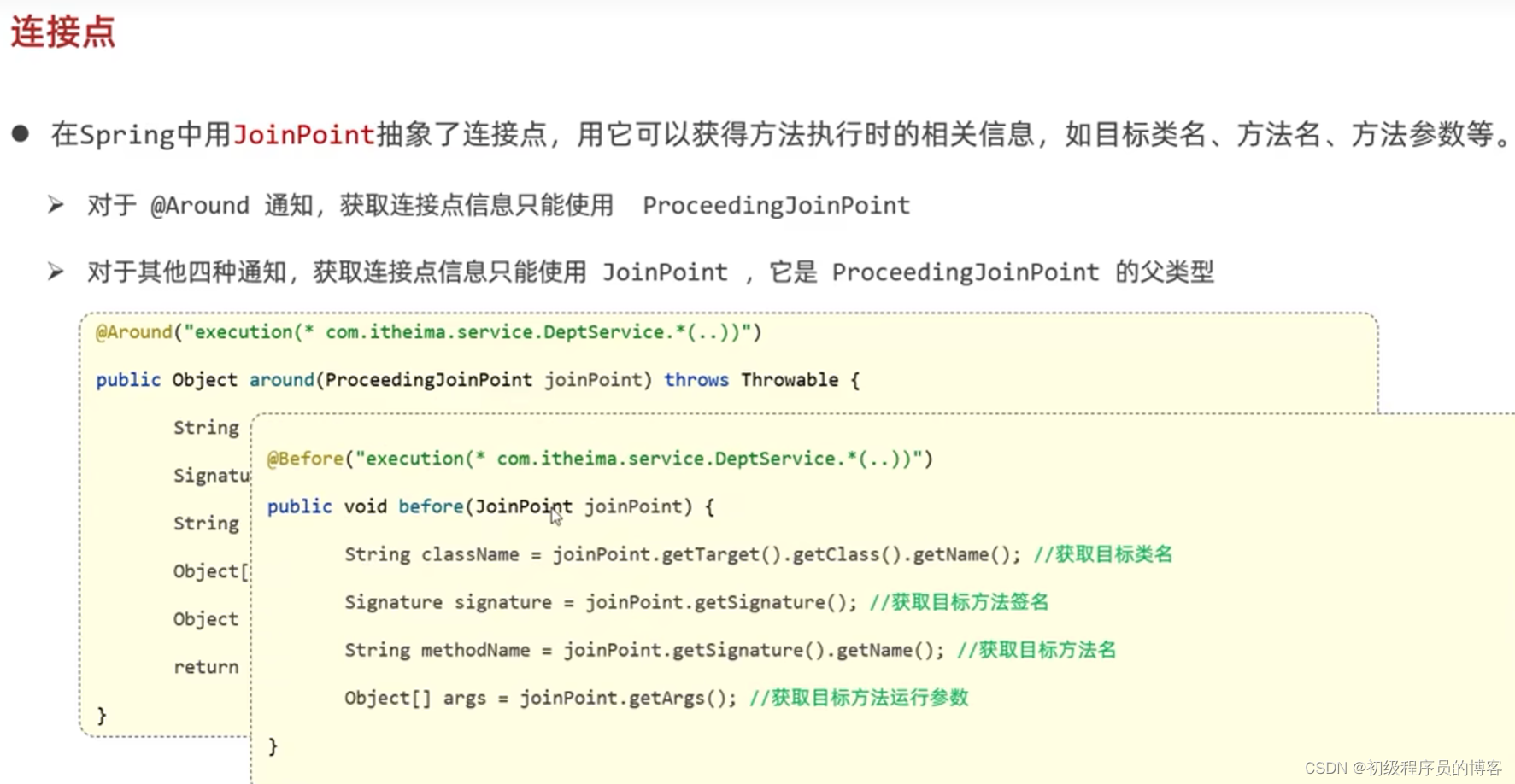
9. AOP实战演练(操作日志表)
要求:实现操作日志表,记录对数据库的增删改查操作的日志。
步骤一
先创建一个记录日志表实体并创建该数据库
pojo.OperateLog:
package com.etc.aoptest.pojo;
import com.baomidou.mybatisplus.annotation.IdType;
import com.baomidou.mybatisplus.annotation.TableField;
import com.baomidou.mybatisplus.annotation.TableId;
import com.baomidou.mybatisplus.annotation.TableName;
import lombok.Data;
import java.time.LocalDateTime;
@Data
@TableName("tb_operate_log")
public class OperateLog {
@TableId(type = IdType.AUTO)
private Long id;
//操作者ID
@TableField("operate_Id")
private Long operateId;
//类名
@TableField("class_name")
private String className;
//方法名
@TableField("method_name")
private String methodName;
//方法参数
@TableField("method_params")
private String methodParams;
//返回结果
@TableField("return_value")
private String returnValue;
//操作耗时
@TableField("cost_time")
private Long costTime;
//操作时间
@TableField("operate_time")
private LocalDateTime operateTime;
}
anno.Log:
package com.etc.aoptest.log;
import java.lang.annotation.ElementType;
import java.lang.annotation.Retention;
import java.lang.annotation.RetentionPolicy;
import java.lang.annotation.Target;
@Retention(RetentionPolicy.RUNTIME)
@Target(ElementType.METHOD)
public @interface Log {
}
步骤二
编写AOP操作,用于在执行该方法时进行环绕通知操作,使用ProceedingJoinPoint获取执行方法的相关信息存入OperateLog数据库中
package com.etc.aoptest.aop;
import com.alibaba.fastjson.JSONObject;
import com.etc.aoptest.mapper.OperateLogMapper;
import com.etc.aoptest.pojo.OperateLog;
import lombok.RequiredArgsConstructor;
import lombok.extern.slf4j.Slf4j;
import org.aspectj.lang.ProceedingJoinPoint;
import org.aspectj.lang.annotation.Around;
import org.aspectj.lang.annotation.Aspect;
import org.springframework.stereotype.Component;
import java.time.LocalDateTime;
import java.util.Arrays;
@Component
@Aspect
@RequiredArgsConstructor
@Slf4j
public class LogAspect {
private final OperateLogMapper operateLogMapper;
@Around("@annotation(com.etc.aoptest.log.Log)")
public Object recordLog(ProceedingJoinPoint joinPoint) throws Throwable{
//TODO 1.通过HttpServletRequest获取token值通过JWT解析获取当前用户id 或者 2.通过ThreadLocal获取当前用户id
Long operateId = 1L;
//类名
String className = joinPoint.getTarget().getClass().getName();
//方法名
String methodName = joinPoint.getSignature().getName();
Object[] args = joinPoint.getArgs();
//方法参数
String methodParams = Arrays.toString(args);
Long begin = System.currentTimeMillis();
Object result = joinPoint.proceed();
Long end = System.currentTimeMillis();
//方法返回值
String returnValue = JSONObject.toJSONString(result);
//操作耗时
Long costTime = end - begin;
OperateLog operateLog = new OperateLog(null,operateId,className,methodName,methodParams,returnValue,costTime,LocalDateTime.now());
operateLogMapper.insert(operateLog);
log.info("AOP记录日志操作:{}",operateLog);
return result;
}
}
步骤三
对于要进行AOP切入的方法前加上自定义的@Log注解
package com.etc.aoptest.controller;
import com.etc.aoptest.log.Log;
import com.etc.aoptest.pojo.User;
import com.etc.aoptest.service.IUserService;
import lombok.RequiredArgsConstructor;
import org.springframework.web.bind.annotation.PathVariable;
import org.springframework.web.bind.annotation.RequestMapping;
import org.springframework.web.bind.annotation.RestController;
import java.util.List;
@RestController
@RequestMapping("/user")
@RequiredArgsConstructor
public class UserController {
private final IUserService userService;
@Log
@RequestMapping("/getList")
public List<User> getList(){
return userService.getList();
}
@Log
@RequestMapping("/{id}")
public User getById(@PathVariable Long id){
return userService.getById(id);
}
}
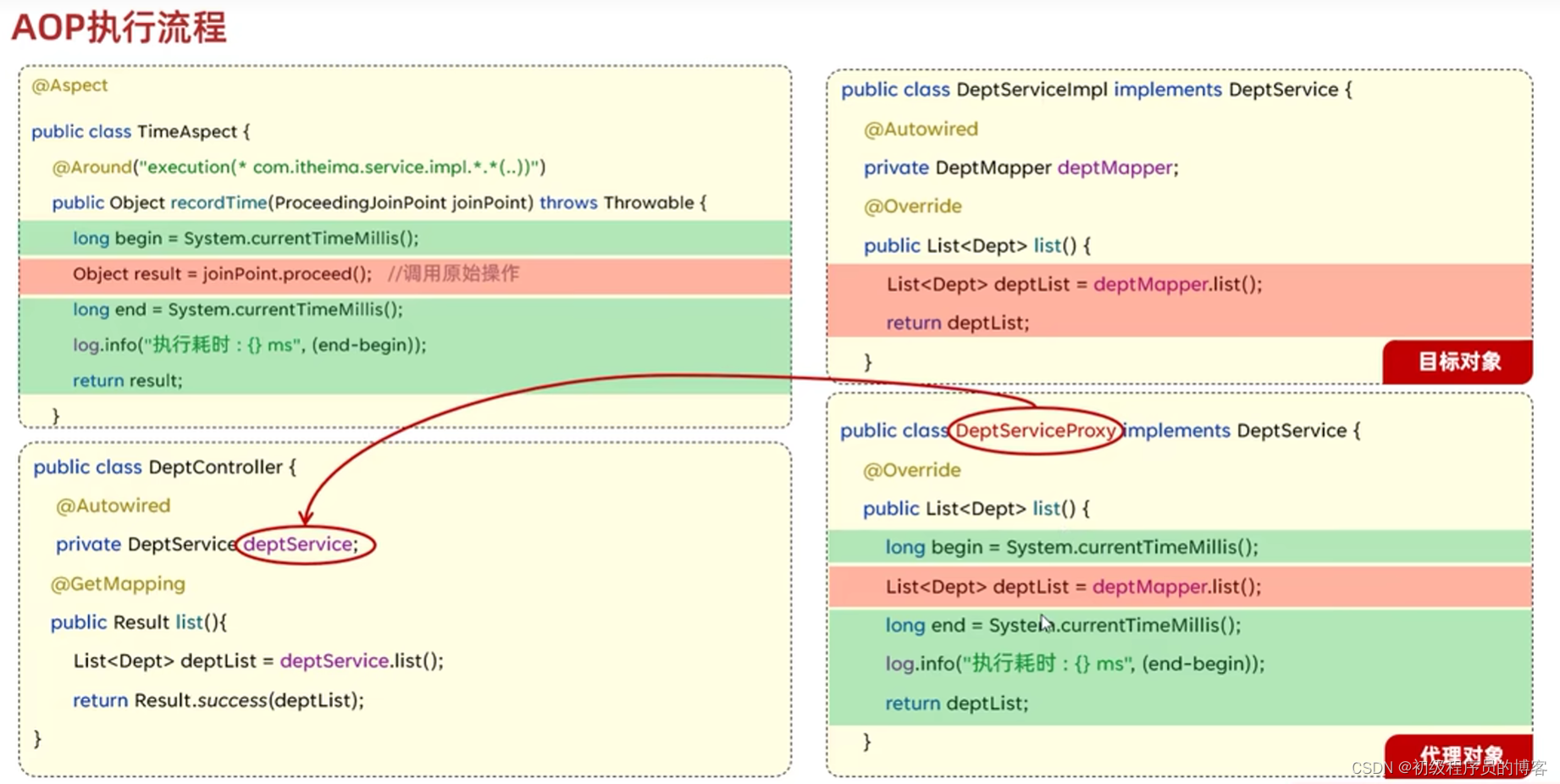
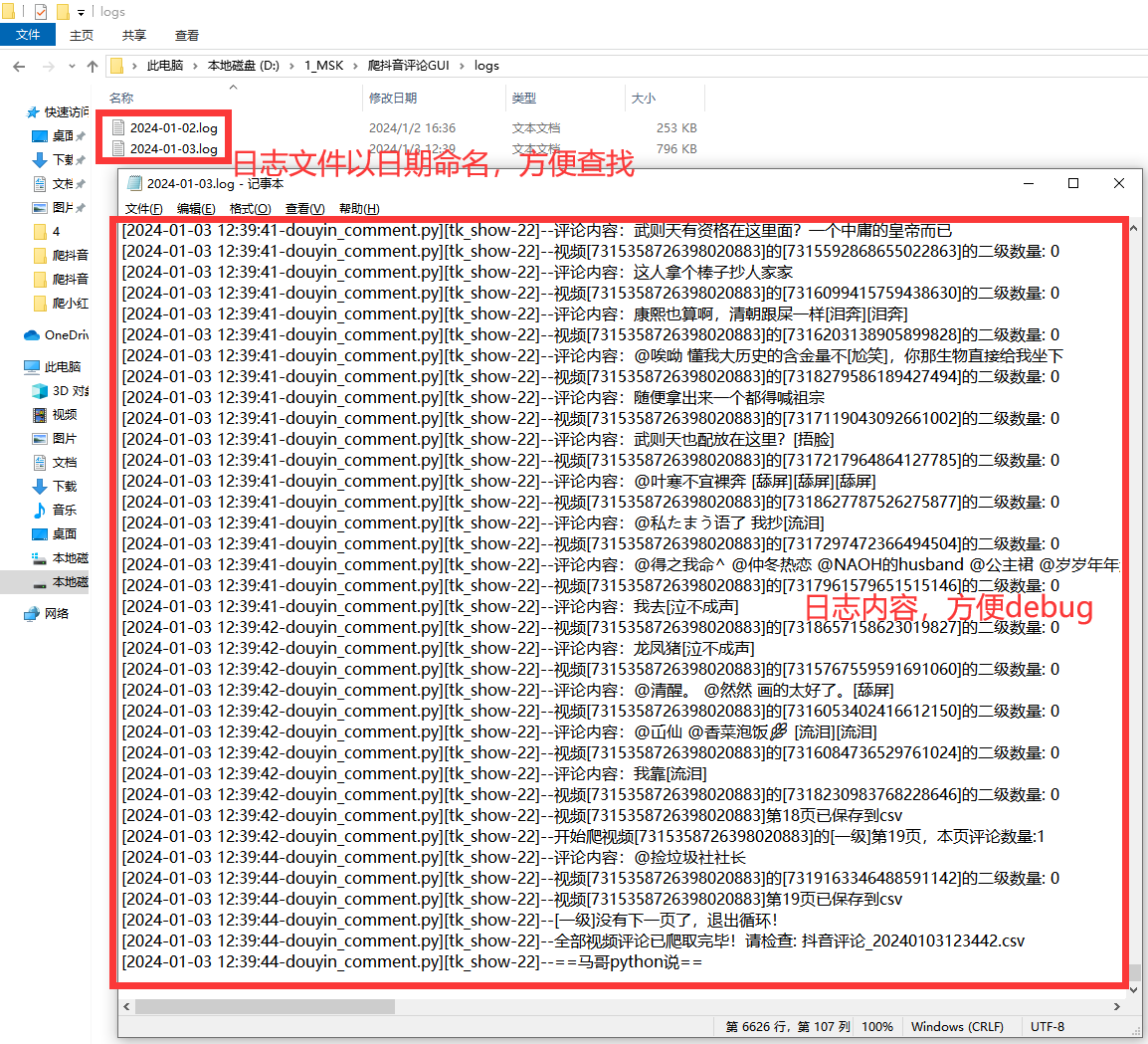


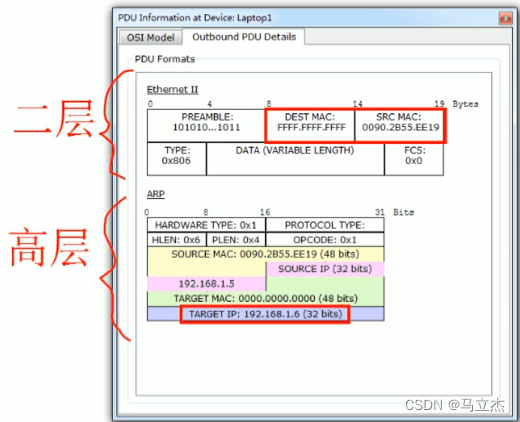

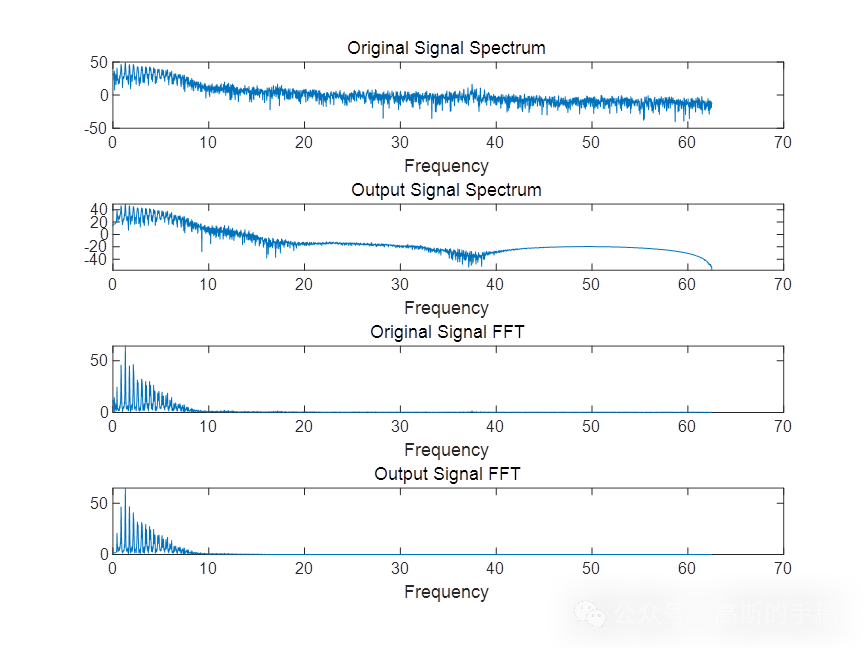


![[NISACTF 2022]easyssrf、[NISACTF 2022]level-up](https://img-blog.csdnimg.cn/direct/9d4523a5130b4a038bd5b33913c7a0b7.png)
